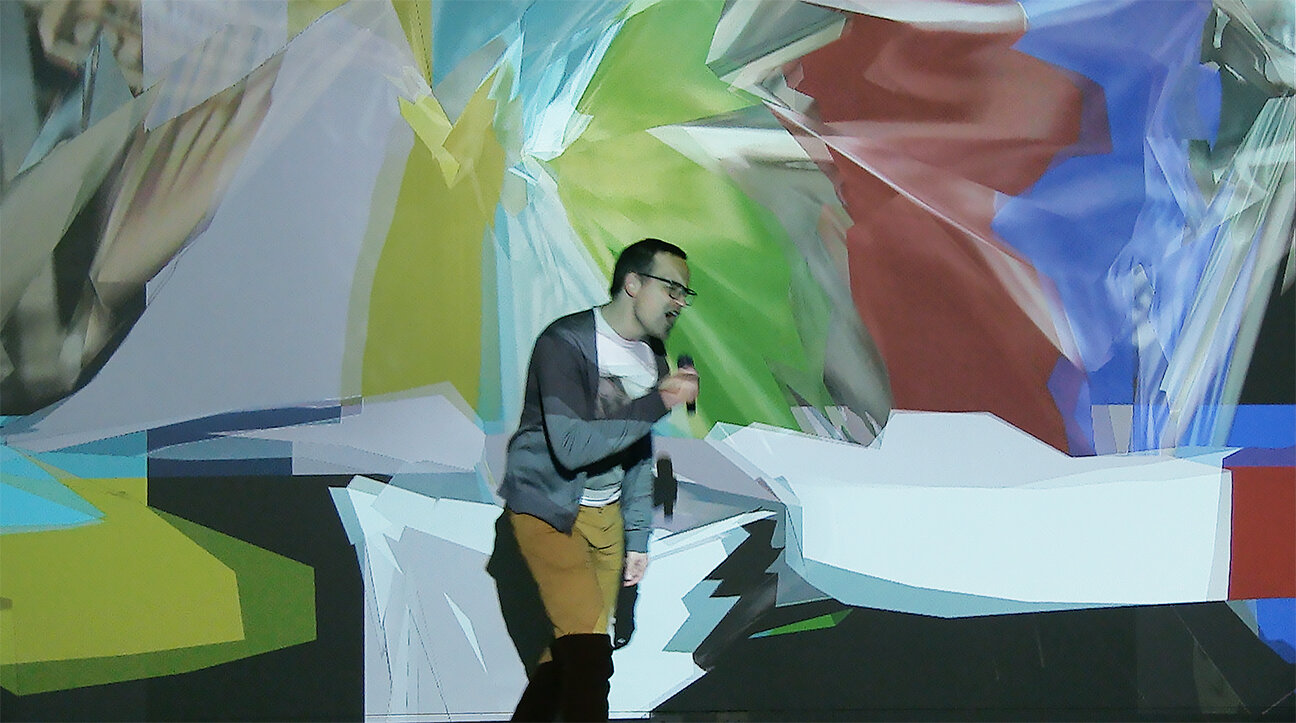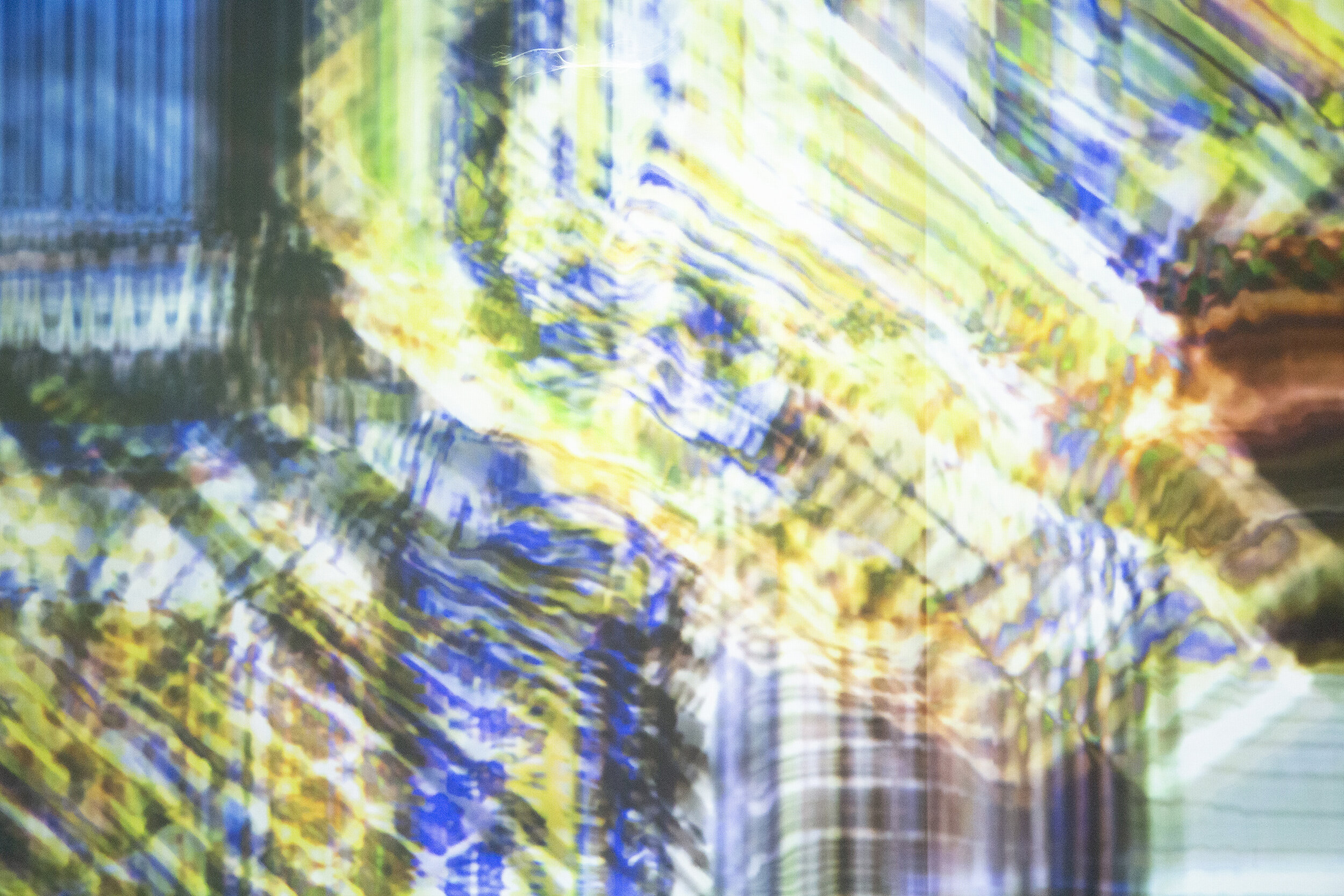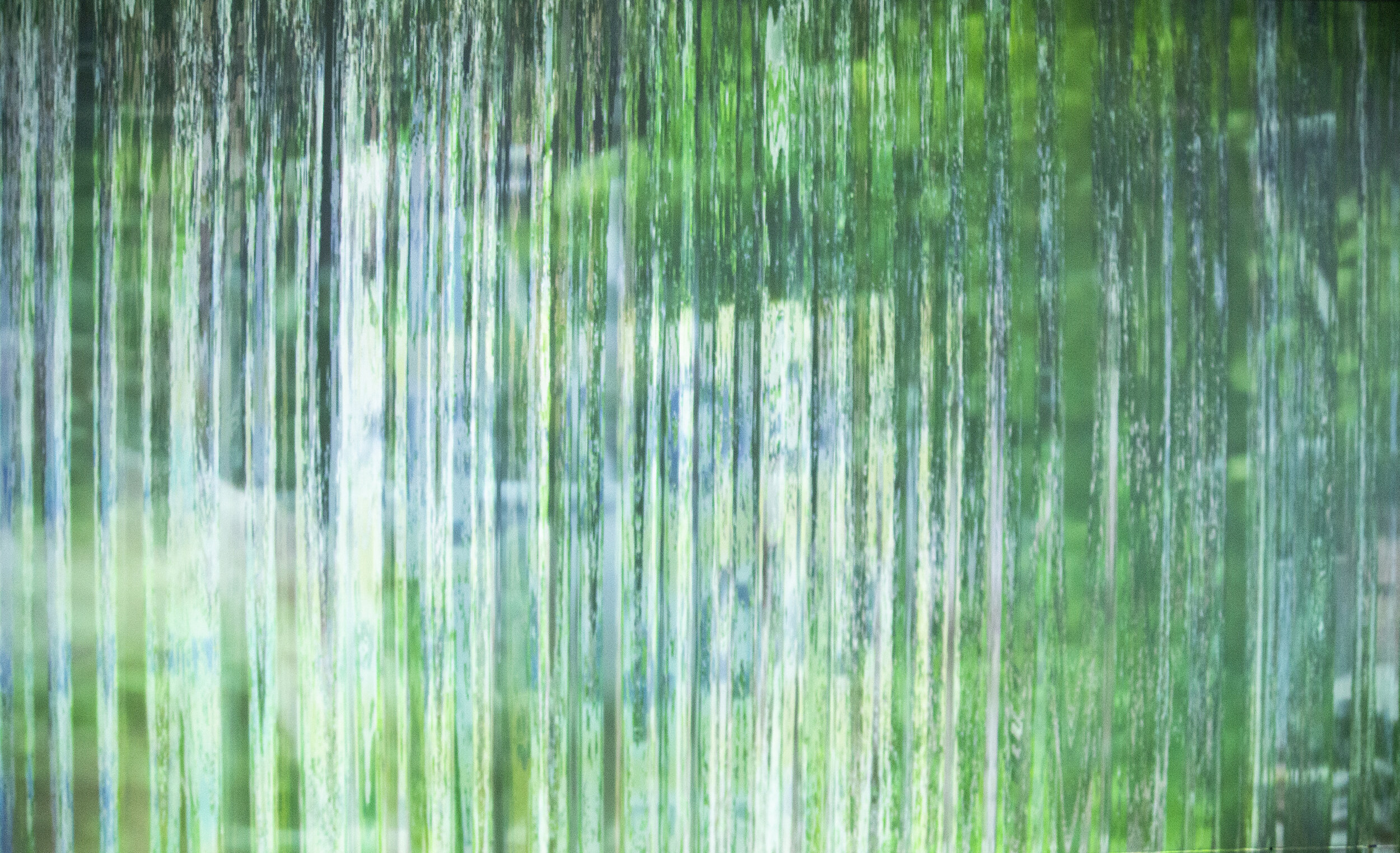IMAGE KARAOKE
kar·a·o·ke /ˌkerēˈōkē/
The word karaoke is derived from two Japanese words 'kara' comes from the word 'karappo' meaning empty or void and 'oke' comes from the word 'okesutura' or orchestra.
As media is traditionally projected at its audience there is a limitation to our response. Media is fragmentary and centralist in order to capitalize on a frame by frame basis. My video works subvert found footage and use appropriation through editing processes to shed light on the patterns observed in television, media, and advertising. They are inspired by the Kuleshov effect, the theory that viewers derive meaning from two or more sequential shots. With each video having its own overarching theme and implications, karaoke sessions give participants a chance to vocalize lyrics of selected popular songs to my video works. The found footage is contrasted with the songs for satirical purposes - mocking and questioning pop culture. Video distortion, which can only be activated by voice, fills the vacant space between the viewers and media and advocates dialogue between the two. This is also inspired by the McGurk effect, the phenomenon that occurs when a sound is paired with the visual of another sound, leading to the perception of a third sound. It is applied in the sense that pop songs while paired to my visuals allow participants to perceive lyrics differently than before. At times lyrics have altered meanings, forcing participants and viewers to have new conversations about music and media.
Amplify
This interactive AV installation has recently been shown in the Robert C. Turner Gallery, Alfred NY USA as a 3 channel, fully immersive experience. Shown in Alfred University’s immersive space, participants were given a private room to sing the tracks to video works. It consisted of 4 video selections with 4 different corresponding playlists. It won the “Best in Show” award through the Alfred University School of Art in Design May 2021.














